A Nature Conservancy manager advocates for growing more native plants — for the garden and the vase
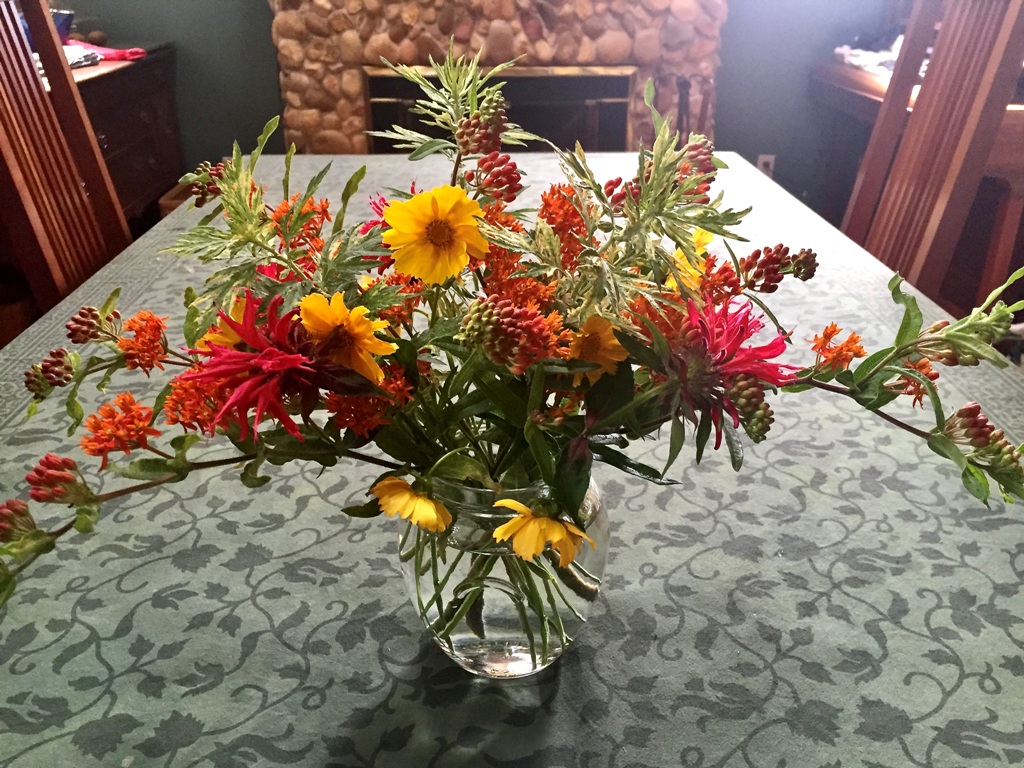
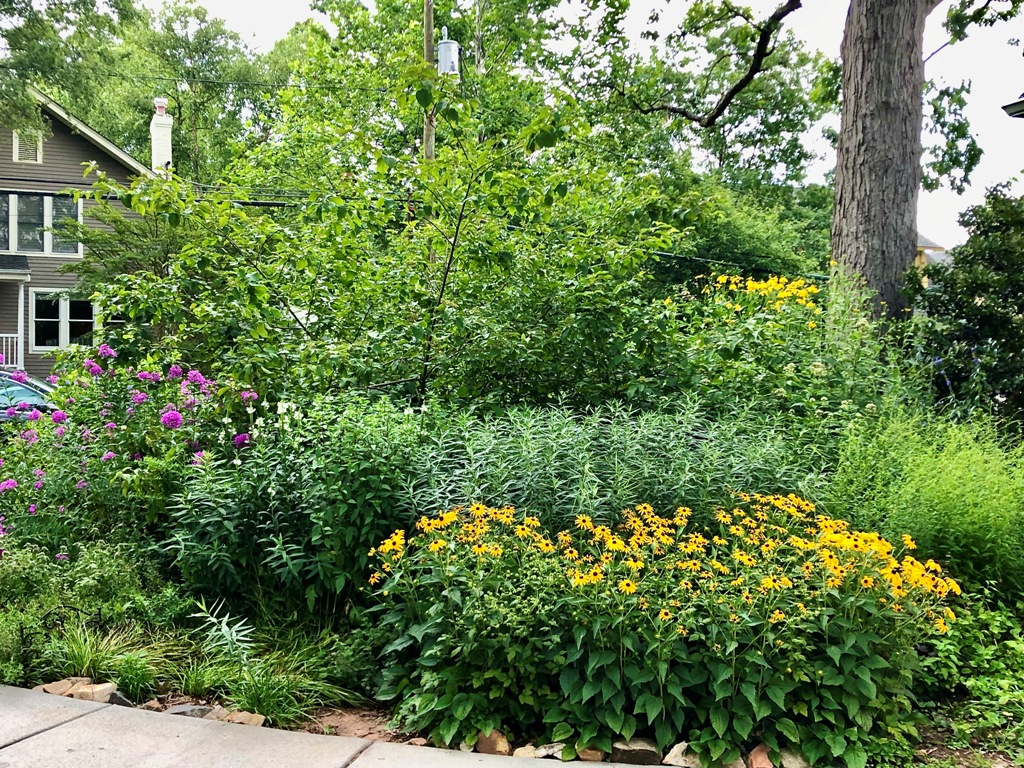
I’m lucky enough to own a small, sunny lot in Arlington, Virginia where I’ve been gardening, observing and learning for 25 years. In the beginning, my garden’s focus was to grow “plants I can get for cheap or free, or plants I can eat, or flowers I can cut.” Now my focus is on gardening almost exclusively with native plants. A first step was removing the so-called butterfly bush (Buddleia davidii) that came with the house. It was pretty, it smelled nice, it brought in butterflies, but it never hosted a single caterpillar. I replaced it with native plants that provide not only nectar for adults, but also leaves for the larvae. If we want our gardens to be graced with butterflies and other pollinators into the future, we need to provide for these creatures’ needs during their entire life cycles, not just during their eye-catching adult stage.
At this point in our nation’s horticultural history, gardening with native plants is neither the norm, nor the cheapest way to go. Depending on where you live, native plants may be hard to find or expensive to acquire. Still, I’ve found that the many benefits outweigh the upfront costs of converting my garden.
If we want our gardens to be graced with butterflies and other pollinators into the future, we need to provide for these creatures’ needs during their entire life cycles, not just during their eye-catching adult stage.
Deborah barber, the nature conservancy
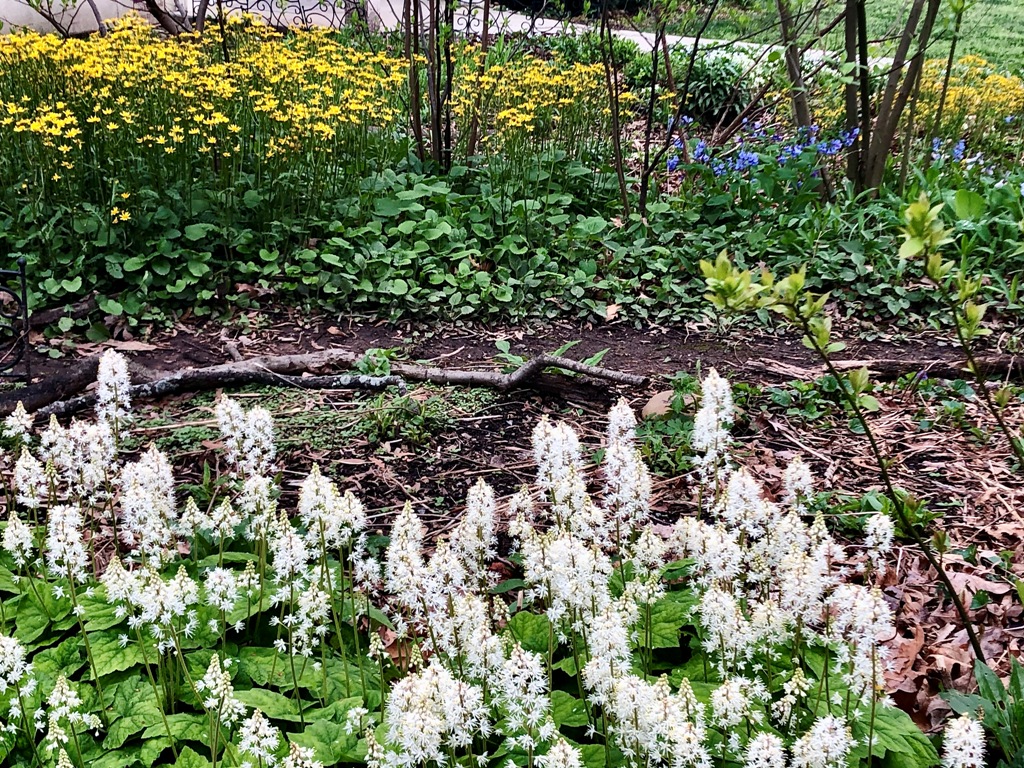
I’m reducing the chance that invasive species will spread from my garden to natural areas. As a land manager for The Nature Conservancy, I know how hard natural area managers work to fight invasive species in our wild areas. In my garden, I started by removing landscaping stalwarts such as nandina, Japanese barberry and liriope. Birds carry these species’ seeds to natural areas, where they are known to be invasive in our region. I’m also keeping watch for new invasives that come in via wind, water or soil, because the easiest way to prevent an infestation is to fight it while it’s new and small.
I’m providing a haven for wildlife. I love looking out my window at the catbird enjoying my elderberries and the skippers on my blue mistflowers. My garden provides shelter and hiding places for birds, small mammals and colorful insects; nectar for pollinators; and foliage that feeds a variety of caterpillars. Occasional losses to chipmunks and rabbits are hardly noticeable and I cultivate an attitude of gratitude that my garden provides enough for everyone.
I’m avoiding chemicals that can harm people, pets, wild animals, and local waterways. Native plants don’t need fertilizer or fancy soil, and I’ve decided to live with some insect damage so there are no pesticides in my garden or garage. There’s nothing scarier in my shed than loppers!
I’m saving money on fertilizers, pesticides, and mulch. I’ve chosen plants adapted to my local soil, light and moisture conditions, so they’ve filled in nicely, and mulch isn’t needed. In the fall I leave the leaves to enrich the soil and provide overwintering spots for eggs and cocoons, so that in the spring the garden will once again burst with life.
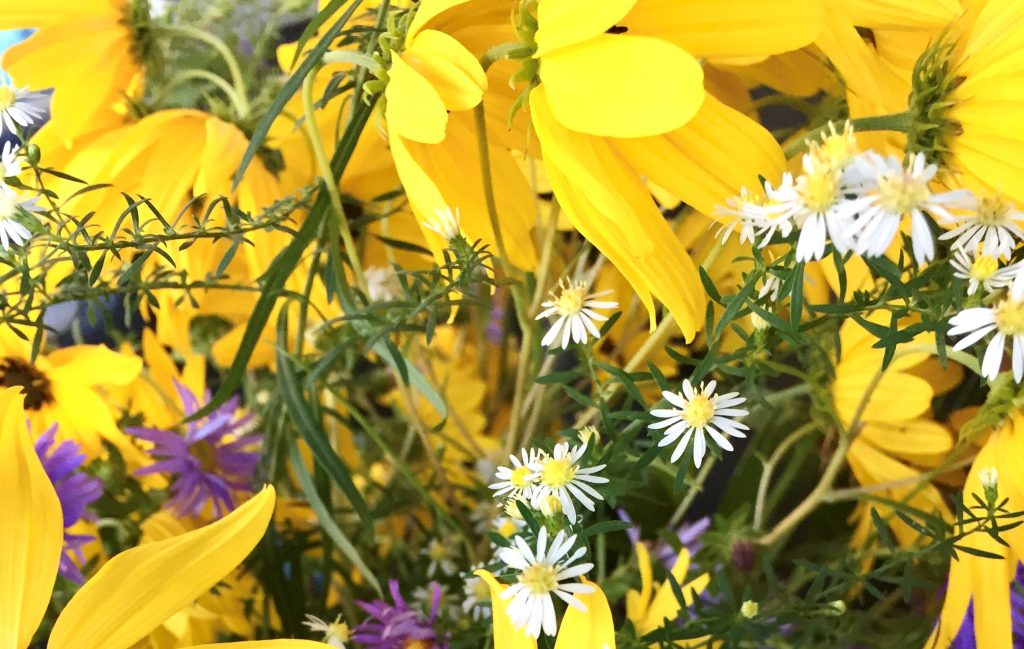
I’m training the community’s eye to a different sort of beauty. Passersby ask me about the pretty plants they’ve never seen before, and I enjoy sharing what I’ve learned about which plants host which butterflies. Many people understand the monarch/milkweed relationship, but don’t realize that most other butterflies also have a narrow range of host species. At least, they didn’t realize it before talking to me! As my priorities have shifted beyond what is merely pleasing to the eye to a fuller understanding of the role our yards play in the larger ecosystem, I do believe that I am bringing some community members along with me.
Practical Tips for Working with Native Plants In the Garden
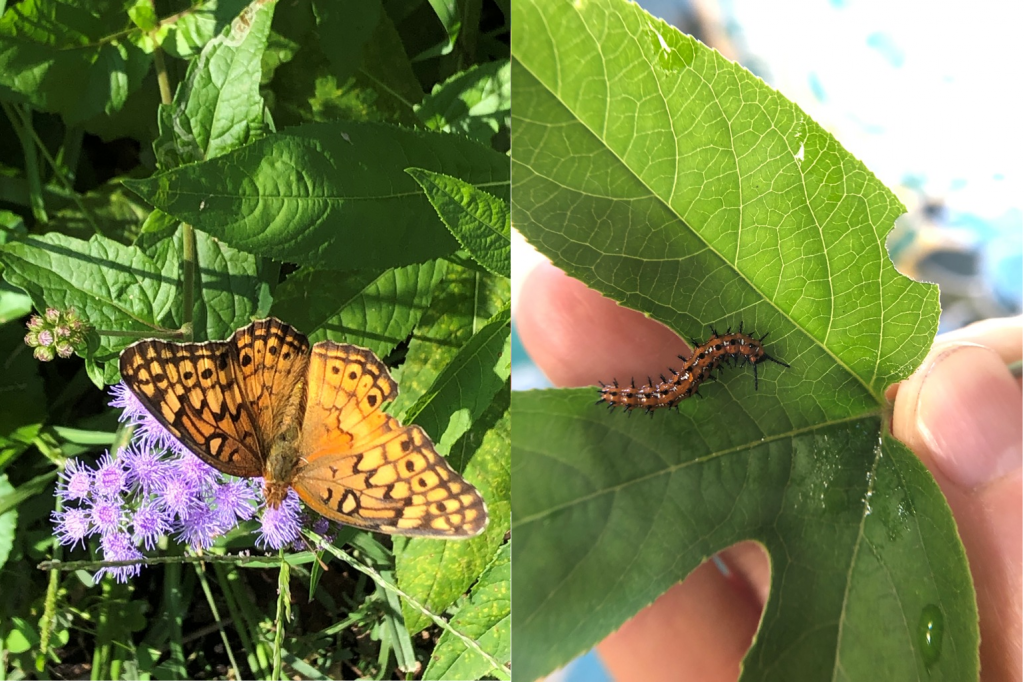
Start by controlling known invasives. Many states have a list of plants that are proven or emerging invasives in the region. Look up “invasive plants in [your state]” online and start by learning and working on those. Note that the invasive plant list is different from your state’s noxious plants list, which is a smaller set of plants, usually agricultural weeds, that landowners may be required by law to remove. If you have a large property, complete removal may be impossible, and the resources you spend controlling invasives needs to be balanced with the resources you spend pursuing your other objectives for the land. I always remind both gardeners and natural area managers to be guided by what they are fighting for, not what they are fighting against.
Wintertime is on your side. If you’re starting plants from seed, start planning in the fall. Many native seeds require a period of cold, moist treatment, called stratification, to germinate. This need for a cold spell, ranging from 10 to 90 days, is nature’s way of keeping seeds from sprouting after the first chilly days in the fall. The winter-sowing technique, in which you plant seeds in containers and leave them outside over the winter, takes advantage of winter’s chill. Seemingly by magic, seedlings will sprout when they’re intended to in early spring. These young plants may be smaller than nursery-purchased specimens (often grown south of where they’re sold, or in a greenhouse) but they will be sturdier and better-adjusted to your local conditions.
You’ll save a ton of money by starting plants from seed—one packet can provide dozens of seedlings to plant and share, for less than the cost of one potted plant. You can learn much more about wintersowing in this Facebook group.
Befriend the bugs. Many of us inherited attitudes that bugs are dirty, annoying, disease-bearing, or at best a necessary evil—except for butterflies and honeybees. But every beautiful butterfly started life as a creepy caterpillar, and those caterpillars eat leaves—mostly those of native plants that they’ve co-evolved with for millennia. Insects are the foundation of our ecosystem, pollinating many food crops and providing essential nourishment for our beloved songbirds. Most insects will not harm us and cause only cosmetic damage to our garden plants, and all are fascinating. Birds rely on insects, and insects rely on native plants, so learning to accept some insect damage to leaves and flowers is part of the native plant game.
I have found great joy in discovering many small creatures making a home in my native plant garden. All the life in my garden became a particular source of solace during Covid shutdowns, when it was safer to visit with my insect friends in the garden than with my human friends indoors. My fascination started with the flashy, flighty pollinators, moved on to colorful predators and eventually to the tiny gall-forming and leaf-mining insects that spend their larval stage inside a plant—even between the upper and lower surfaces of a leaf! To help you learn what you’re seeing, I highly recommend the citizen science tool iNaturalist. It’s an app that helps you identify wild species and connects you to a worldwide community of citizen and professional scientists who can support your learning journey about the diversity of life on Earth.
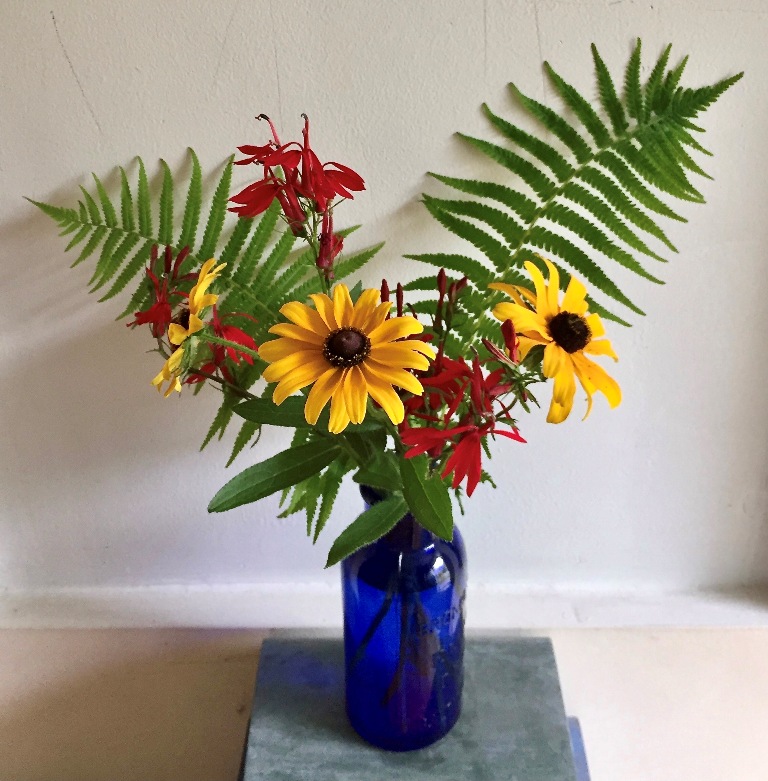
Uninvite the herbivores. In my urban village I’m fortunate not to contend with deer and their voracious appetites, but most gardeners do. And although I’m delighted by my garden bunnies, at times I’m annoyed when they nip my plants. Potential solutions are legion, and their effectiveness is site-specific, context-dependent and influenced by many variables. How hungry and overpopulated are the deer this year? Is there something tastier and more accessible off your property? Did last year’s development project destroy the local fox den, leading to a rabbit population explosion? Although these factors are beyond your control, it’s worth trying to understand how your food sources fit into the larger landscape.
Anti-herbivore approaches include intimidation tactics, lethal methods, unpalatable plants, repellents, and physical barriers. Intimidation tactics and lethal methods are out of the question for me. Although some plants are tastier to deer than others, I doubt there are any absolutely deer-proof plants: much depends on how hungry they are at your time in your place. In the garden I’ve tried smelly sprays to repel rabbits; in ecological restoration areas The Nature Conservancy uses clove oil to make tree plantings unpalatable to deer. These work fine—for a matter of days or weeks.
Over time I’ve found physical barriers to be more sustainable than chemical repellants. On one Nature Conservancy preserve, we’ve surrounded a tasty rare plant population with an eight-foot-high fence to protect it from deer. Yes, deer can jump a fence of that height if they want, but this area is small enough that they don’t make that choice. An exclosure surrounding a larger area would need to be higher. To temporarily uninvite rabbits, I made cylindrical cages from chicken wire, which I deploy to protect plants while they’re young, tender and getting established. Then once there’s enough for everyone I remove the exclosures, and the party’s back on. Now that the garden is mature and full, any small mammal herbivory is no longer noticeable.
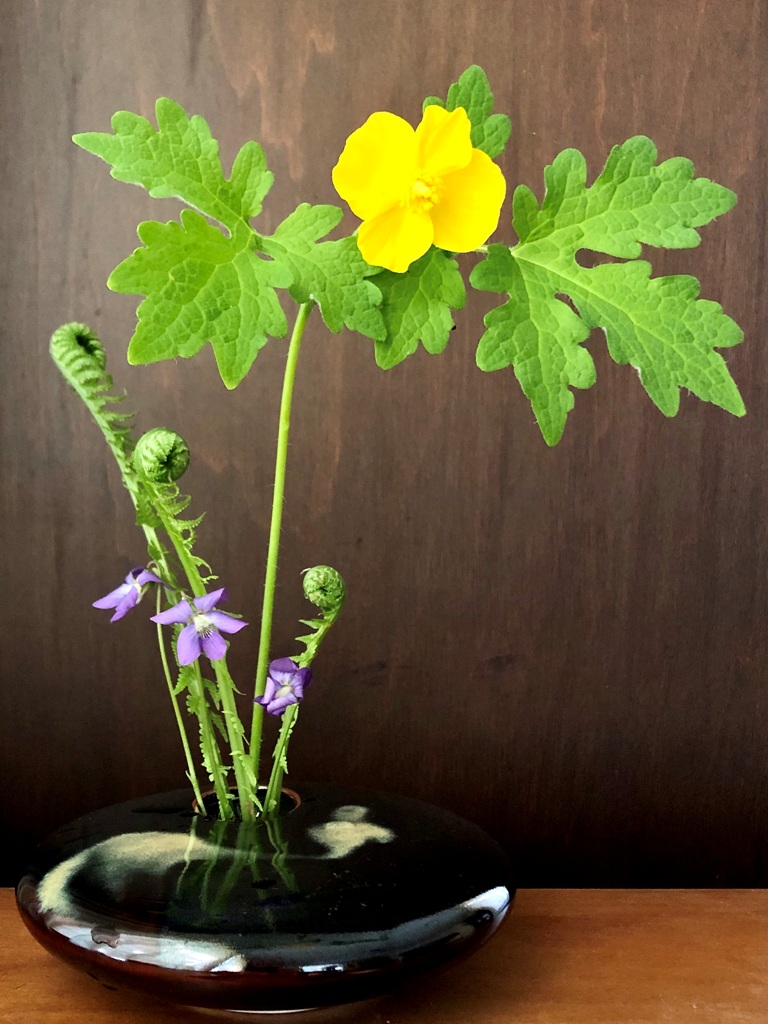
Decide on the look you want. “Native plant garden” may evoke a vision of a messy, unkempt riot of green, but it doesn’t have to be that way. In addition to my home garden, I volunteer at the native plant garden surrounding our neighborhood’s community center, where I manage for a traditional look with non-traditional plants. A wild meadow is appropriate in some places, but not around this suburban building that gets rented out for weddings and other events. Even though this land can never host a full ecological restoration, every native plant helps to provide food and haven for local wildlife.
I use a few techniques to keep this garden organized and looking well-cared-for. For those beautiful native species that are too tall for a conventional look, I use the Chelsea Chop–cutting the plants back by about a third before bloom time–resulting in shorter, bushier growth. Areas that are too wide for me to easily reach from the sidewalks get subdivided with small footpaths, lined with fallen limbs from the park’s overhanging oak trees. In planting, I mass plants and aim to have one species cover at least four square feet, rather than letting them intermingle. And I’ve learned the hard way not to place tall plants close to the sidewalks. They invariably get knocked over in our increasingly severe storms, usually at their peak of bloom, and I have to cut them back. I’ve found shorter natives like green-and-gold (Chrysogonum virginianum), violets, and elephant’s-foot (Elephantopus caroliniana) to be sidewalk-safe and much less work in the long run.
Many of our prized conventional garden plants have characteristics that they were bred for over generations and that are rare in wild species. Still, it’s fun and challenging to search for natives that can provide a similar look. Can’t do without huge blossoms? Here in the mid-Atlantic, try a native hibiscus (Hibiscus moscheutos or Hibiscus coccineus). Longing for bronze or purple foliage? Lyre-leaf sage (Salvia lyrata) might do the trick. Looking for the freshness of variegated foliage? Snow-on-the-mountain (Euphorbia marginata) can provide that cool white-striped flash among the green. It’s true that the flowers of natives are often smaller than those of garden plants, but by massing and planting thickly, you can provide blocks of color that pop from a distance.
Look into “lazy” gardening. Managing your garden in the best way for local wildlife can mean less work for you. By letting flowers go to seed, you attract birds, who don’t really need bird feeders at all. By leaving the leaves that fall in autumn, you enrich the soil and create wintering sites for butterflies such as the mourning cloak. By letting stems stand until spring, you retain nesting sites for native bees. In my garden, using a light hand with fall cleanup is a conscious choice.
I balance my human desires with the needs of local wildlife.
deborah barber
We were raised to believe that hardworking, “good” gardeners rule their gardens by raking, trimming and mulching promptly after the growing season. It turns out that nature prefers a little messiness over a tidy garden aesthetic. Only you can find the right balance between your neighbors’ expectations and habitat value at your unique site—but know that there is a nationwide community of wildlife-friendly gardeners who support you as you move your garden toward messiness. Learn more at yardmap.org .
Decide how native to go. Some non-natives are still great for pollinators. In my home garden, I can’t bring myself to give up the Sheffield daisies that pull in the late pollinators on warm October and November days, and that last a good three weeks in the vase. Nor do I plan to replace my beloved fig tree with juneberries and pawpaws, although I do grow both those natives on the side. These are choices I’ve made as I balance my human desires with the needs of local wildlife. The strictest form of native plant selection sticks to species that are native to your county. The next notch along that spectrum is using plants that are native to your state and/or your ecoregion. As a local example, there are southeastern US plants whose range just barely reaches into the southeastern corner of Virginia, but there they thrive in soils and weather conditions that are very different from my own area in the piedmont of Virginia. Another consideration is whether to use or exclude “nativars”–cultivated varieties, or cultivars, of native species that have been selected for qualities that benefit the human observer more than they benefit wildlife. Examples are double-flowered cultivars (which can make nectar and pollen harder for pollinators to reach); sterile varieties (which provide seeds that birds could eat); and purple foliage (which discourages caterpillars). Some other alterations may have a neutral or even positive effect on wildlife value. Here’s a good summary of the issue with links to additional resources.
Words of Encouragement: Defining where your garden will fall along the native/exotic spectrum is your choice, and your approach may shift over time as you learn more. If you are a beginner and it all seems overwhelming, please feel confident that every native that replaces a non-native ornamental will improve your garden’s value for wildlife large and small.


Thank you for this informative and inspiring article. I especially appreciate your attitude towards our fellow species:
“Occasional losses to chipmunks and rabbits are hardly noticeable and I cultivate an attitude of gratitude that my garden provides enough for everyone.”
**
“I’ve decided to live with some insect damage so there are no pesticides in my garden or garage.”